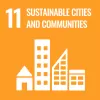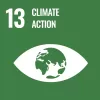Teaching participants about:
-particularities of wild plants vs cultivated ones
-good practices when searching to find and eat wild plants
-examples of common and easily identifiable edible wild plants
-easy to make recipes
-rewilding our gardens and permaculture
There are many challenges facing humanity in the near future. Food security might be the most important and delicate of them all, as it involves one of our most basic needs: to eat.
Food can take many forms, just like procuring it requires various actions.
While growing our own food has been the main way to do it for the last 10000 years, some even more ancient practices are starting to be interesting again.
Wild foraging for edible fruits and plants might sound adventurous, but its no more difficult than taking a walk into your own backyard, visiting a park or a nearby forest.
During a one hour online session you will have the chance to discover why edible wild plants are so important to securing our future food.



